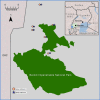Socio-economic and environmental factors affecting breastfeeding and complementary feeding practices among Batwa and Bakiga communities in south-western Uganda
- PMID: 36962281
- PMCID: PMC10021580
- DOI: 10.1371/journal.pgph.0000144
Socio-economic and environmental factors affecting breastfeeding and complementary feeding practices among Batwa and Bakiga communities in south-western Uganda
Abstract
Improving breastfeeding and complementary feeding practices is needed to support good health, enhance child growth, and reduce child mortality. Limited evidence is available on child feeding among Indigenous communities and in the context of environmental changes. We investigate past and present breastfeeding and complementary feeding practices within Indigenous Batwa and neighbouring Bakiga populations in south-western Uganda. Specifically, we describe the demographic and socio-economic characteristics of breastfeeding mothers and their children, and individual experiences of breastfeeding and complementary feeding practices. We investigate the factors that have an impact on breastfeeding and complementary feeding at community and societal levels, and we analysed how environments, including weather variability, affect breastfeeding and complementary feeding practices. We applied a mixed-method design to the study, and we used a community-based research approach. We conducted 94 individual interviews (n = 47 Batwa mothers/caregivers & n = 47 Bakiga mothers/caregivers) and 12 focus group discussions (n = 6 among Batwa & n = 6 among Bakiga communities) from July to October 2019. Ninety-nine per cent of mothers reported that their youngest child was currently breastfed. All mothers noted that the child experienced at least one episode of illness that had an impact on breastfeeding. From the focus groups, we identified four key factors affecting breastfeeding and nutrition practices: marginalisation and poverty; environmental change; lack of information; and poor support. Our findings contribute to the field of global public health and nutrition among Indigenous communities, with a focus on women and children. We present recommendations to improve child feeding practices among the Batwa and Bakiga in south-western Uganda. Specifically, we highlight the need to engage with local and national authorities to improve breastfeeding and complementary feeding practices, and work on food security, distribution of lands, and the food environment. Also, we recommend addressing the drivers and consequences of alcoholism, and strengthening family planning programs.
Copyright: © 2022 Scarpa et al. This is an open access article distributed under the terms of the Creative Commons Attribution License, which permits unrestricted use, distribution, and reproduction in any medium, provided the original author and source are credited.
Conflict of interest statement
I have read the journal’s policy and the authors of this manuscript have the following competing interests: J.E.C. is Director of Dietary assessment Ltd. No other competing interests to declare.
Figures



References
-
- UNICEF. Malnutrition 2021 [cited 2021 30th March].
Grants and funding
LinkOut - more resources
Full Text Sources
Miscellaneous
